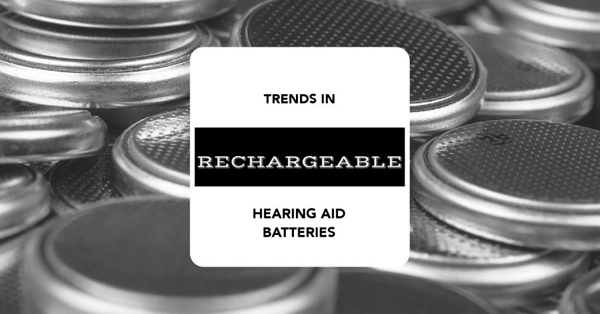As mentioned in the previous post about batteries, hearing aids have four main components: microphone, amplifier, speaker/receiver, and a battery. Batteries range in size, from #10 (small) to #675 (large), depending on the size of the hearing aid.
A new trend in hearing aids is the option of rechargeable batteries. There are two main advantages for users who choose rechargeable batteries:
1. Rechargeable batteries are environmentally friendly. Each year, the average hearing aid user throws away 104 disposable batteries. Rechargeable batteries save this excess waste.
2. Rechargeable batteries in hearing aids are easier to use and require less dexterity than disposable batteries. With rechargeable batteries, the entire hearing aid is placed in the charging unit, eliminating the need to open/close the battery door and remove/reinsert the battery.
Rechargeable batteries allow the user to charge their hearing aids at night, when the hearing aids aren’t being used. The entire hearing aid is placed in the charging unit for a set length of time. Most chargers require a 4 hour cycle, when the hearing aids have been worn during the day.
Siemens (now Signia) was one of the first manufacturers to incorporate rechargeable batteries into hearing aids. Recently, Phonak launched their rechargeable batteries and ZPower has created a retro-fit rechargeable system for many of the hearing aids available on the market today.
Interested in hearing aids and/or rechargeable batteries? Call Designer Audiology at (301) 854-1410 to schedule a communication needs appointment today.

